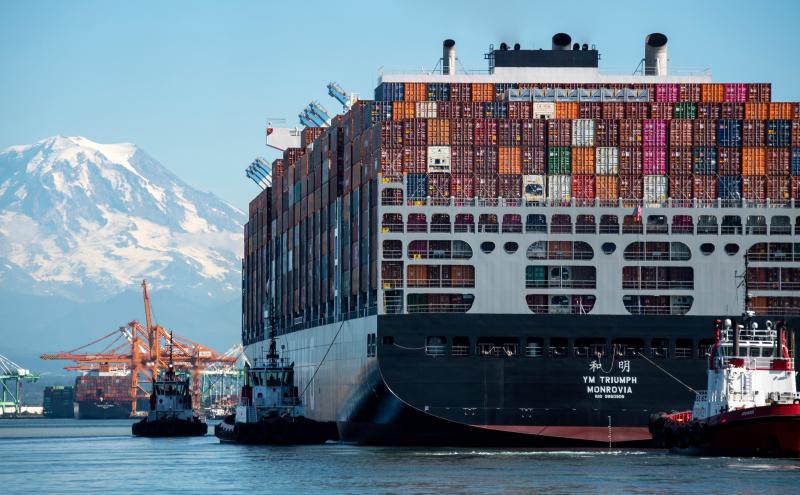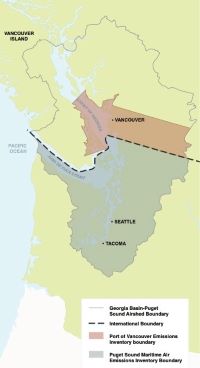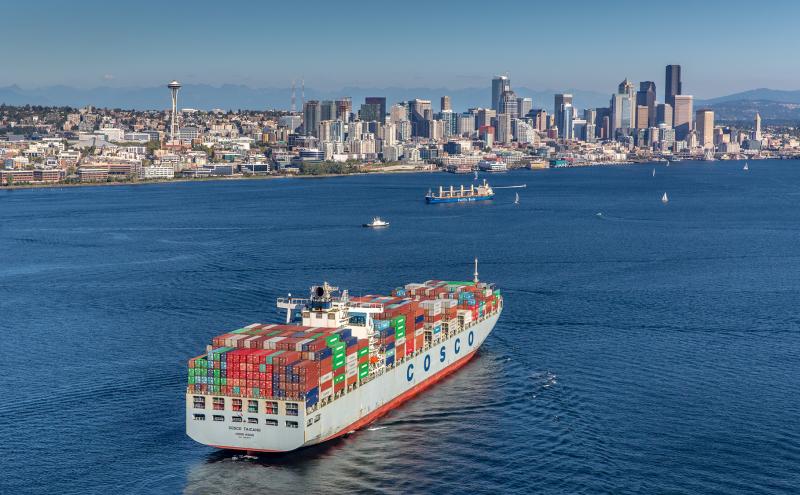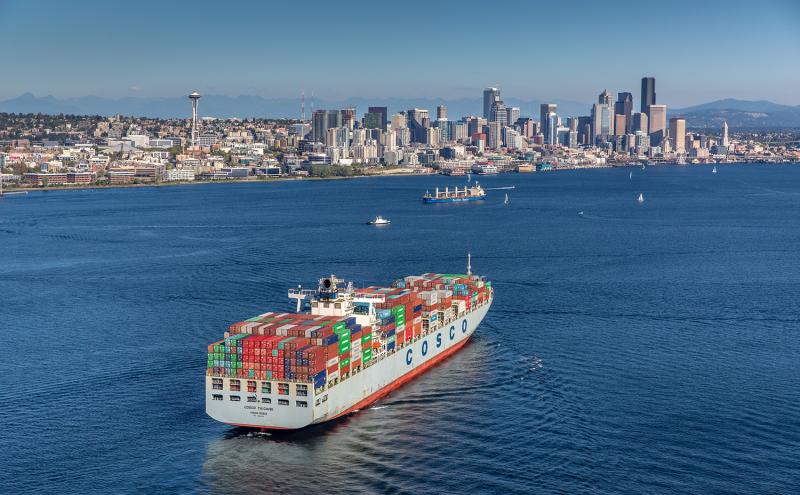
By Elise Lasky, Washington Sea Grant Hershman Fellow
“It’s like a deafening, piercing smoke alarm going off in the kitchen. We have to put out the fire,” said Erik Solheim, executive director of the U.N. Environment Program in 2018. He added that the need to either stop emissions entirely by 2050 or find some way to remove as much carbon dioxide from the air as humans put there “means net zero must be the new global mantra."
— Source: Washington Post, October 7, 2018
This 2018 warning from the United Nations (U.N.) Intergovernmental Panel on Climate Change (IPCC) came as a call to action for unprecedented changes by energy, transportation systems, and civilization as a whole to stem the catastrophic impacts of emissions on global warming.
Closer to home, Northwest Ports recognize the need for immediate and drastic action to reduce the maritime industry and supply chain reliance on fossil fuels. Ports can play a pivotal role in driving the zero-emission transformation.
To improve air quality in our region and prevent the most devastating effects of global warming, the Port of Seattle, Port of Tacoma, Northwest Seaport Alliance, and Vancouver Fraser Port Authority in British Columbia collaborated to develop and adopt the Northwest Ports Clean Air Strategy, a bold new commitment to clean air and climate action. The 2020 Northwest Ports Clean Air Strategy (“Strategy”) updates the longstanding partnership between the four Northwest Ports and sets an ambitious vision for a carbon and air emissions-free future for the ports and the region’s maritime industry.
To celebrate Earth Month, we unveil five ways the Northwest Ports are working towards an emissions-free future.
1. Regional collaboration to protect our shared airshed

Air pollution can move across a region without respect for city limits or even borders between states and nations, so it’s a shared responsibility to work together to protect our air quality. It’s why the four Northwest Ports have been working together since 2008 to reduce air and climate pollution across our shared airshed. The partnership also includes regulatory agencies from the U.S. and Canada and benefits from ongoing involvement from industry and community groups on both sides of the border. The ports adopted the original Strategy in 2008 — the first ever multi-port, voluntary, international clean air partnership — and released a first update in 2013. Since inception, the Strategy emphasizes collaboration over competition and the Northwest Ports have proven that by working together, they can do more for the environment than they could by acting alone. The Strategy has spurred major achievements in sustainability, policy, and technology throughout the Pacific Northwest and the 2020 update to the Strategy continues those efforts toward a zero-emission future.
2. Meeting goals ahead of schedule
The 2013 Strategy set the following targets to be reached by 2020:
- 80 percent reduction of diesel particulate matter (DPM) emissions per metric ton of cargo
- 15 percent reduction of greenhouse gas (GHG) emissions per metric ton of cargo
The four ports collectively achieved these targets in 2016.
The Port of Seattle, the Northwest Seaport Alliance, and the Port of Tacoma measure emission reduction progress every five years through the Puget Sound Maritime Air Emissions Inventory. As of the 2016 Puget Sound Maritime Emissions Inventory, air pollution from port-related sources in Seattle decreased 61 percent, and climate pollution decreased 27 percent since the ports compared to the first year of measurement in 2005.
3. Committing to being emissions-free as soon as possible by 2050
The 2020 Strategy recognizes the urgency of the climate crisis and the need to dramatically reduce -and ultimately eliminate- diesel pollution from port-related sources, especially in areas where environmental health disparities exist. It sets objectives and measures progress by the ports on:
- Installing critical clean fueling infrastructure to jump-start the zero-emission transition by 2030
- Supporting broad adoption of fully zero-emission ships, trucks, and other equipment operating at the ports as soon as possible ahead of 2050
- Improving efficiency, replacing high-emitting equipment, and using lower-emission fuels in the interim
This won’t be easy, and the ports won’t succeed by acting alone. Meeting or beating the “zero by 2050” vision will require accelerated effort by many entities in many areas – including the adoption of supportive public policies, the commercialization of reliable and affordable zero-emission technologies, and the planning and installation of the necessary charging and fueling infrastructure both on and off the ports. That said, the ports are not limited in how fast implementation actions are taken and can achieve the proposed commitments ahead of schedule, and work toward the vision and objectives of the Strategy is already underway. For example, Port of Seattle plans to complete shore power installations at all of its cruise berths by 2023, well ahead of the Strategy objective. Read the Northwest Ports Clean Air Strategy.
4. Listening to diverse perspectives to create the 2020 Strategy
The Port of Seattle worked with the other U.S. ports — the Port of Tacoma and the Northwest Seaport Alliance — to engage community members, environmental and health advocacy organizations, industry representatives, and Tribal, federal, state, and local government agencies in developing the 2020 Strategy. Input received in workshops, one-on-one meetings, briefings, and comment letters over the two-year development process informed the vision and objectives. While feedback diverged on timelines for the zero-emission transition, the ports heard broad support for collaborative action and the need to continue engagement throughout implementation.
5. Charting a course to zero with actions for the next 10 years
Under the 2020 Strategy, all Northwest Ports commit to the same zero-emission vision and objectives.
Since each Northwest Port supports a different mix of business and industries, the ports are separately developing implementation plans that identify actions, key projects, and implementation timelines within each port’s local context. The Port of Seattle is developing an implementation plan called Charting the Course to Zero Port of Seattle’s Maritime Climate and Air Action Plan. It will identify strategies and actions in the next 10 years to achieve the Port’s Century Agenda greenhouse gas reduction targets and stay on track to phase out emissions by midcentury. The Plan will cover strategies to reduce emissions from the Port of Seattle’s cruise industry, grain cargo operations, commercial fishing, and recreational marinas. It will also cover administrative sources of GHG emissions like electricity and natural gas in Port buildings, fuel used in fleet vehicles, employee commute trips to work, and solid waste.
How can you get involved? Check out the Northwest Ports Clean Air Strategy webpage to access Strategy documents and implementation progress reports.
Subscribe to the Port's sustainability newsletter for ongoing news.








